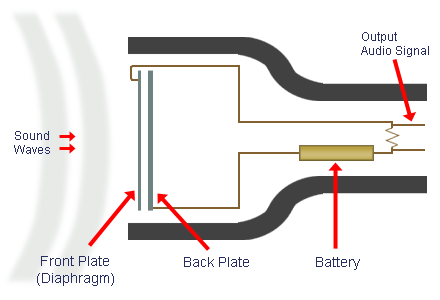Wanna Know The Different
types of Microphones?
We've all seen them
being used atleast once in our lives, be it being used at a concert to make
Justin Beiber sound 10 times louder (and manlier), or being lowered down from
the ceiling of a wrestling ring for the announcements, but all these
MICROPHONES essentially do the same thing but in a different way which brings
up the question of the different types of Microphones.

First off lets us look
at the principle a microphone uses to work. A Microphones is technically a
transducer which is a device that converts a type of energy into a different
type, which in the case
of a microphone,
converts physical energy into electrical energy. Different types of microphones
accept and convert sound pressure differently which gives the microphones it's
characteristic on the basis of their textures, qualities and uses.
Instead of getting into
detail, we'll just look into the TWO main "umbrella" categories of
microphones, which are
- Dynamic Microphones
&
- Condenser Microphones
A Dynamic
Microphone, also called moving-coil microphone has a few components inside
of it, which help produce the sound through a speaker, which are the diaphragm,
coil and magnet. The diaphragm element,which is placed in front of the magnet,
moves back and forth due to sound pressure with respect to sound waves. There
is also another part in between the diaphragm and magnet which is a coil. Due
to the vibrations coming from the sound waves, the coil also moves. This
movement inside produces an electromotive force across the terminals of the
coil, with which in turn, sound is produced.
If you're
looking for something reliable and versatile, then you would want to start
with dynamic
mics.
Thanks to their moving coil magnetic diaphragm, these mics reliably capture
sound and can do so even at high sound pressure levels. Which allows you to use
them for miking loud sound sources like bass and guitar amplifiers, and even
drum kits without worrying about damage AND they also work quite well in
quieter settings.

A Condenser
Microphone, which is also known by the name capacitor microphone
or electrostatic microphone consists of a component, made up of a thin
film covered with a conductive material like silver or gold suspended over a
powered backplate. The diaphragm is a piece of an electrical circuit that
transforms voltage with movement and this voltage turns into the output of the
microphone which is what we all hear.

Not all microphones like the dynamic microphones, require
power to work whereas condenser microphones do require it. This power is
supplied by means of an outside “power supply” or something many in the
industry refer to as “phantom power” which gets its name from the fact that it
cannot be seen hence "Phantom" and in light of the fact that there is
no extra wiring or connections to carry the direct current power from the
support to the microphone. Phantom power is a direct current voltage given back
through the microphone cable from the console to the capacitor microphone to
run its internal hardware. Mostly all audio consoles have a built-in 48 volt
supply that can be sent to the required microphone through the microphone (XLR)
cable. Since they use this technology instead of actual moving coils like
the dynamics, fidelity and sound quality is improved, making these mics ideal
for precision recording in the studio. Whatever instrument you are trying to
record, condenser mics will get the job done so long as the sound pressure
levels aren't too high. Just remember to handle them with care as they are not
as robust as dynamic mics.

References
A Mic
for Every Occasion: Types of Mics and Where to Use Them. (2013, February
03). Retrieved November01,2017,from http://inventorspot.com/articles/mic_every_occasion_types_mics_and_where_use_them
Cross-Section of a Typical
Condenser Microphone [Photograph]. (n.d.). Retrieved from
https://www.mediacollege.com/audio/microphones/condenser.html
[Different types of Dynamic
microphones] [Photograph]. (n.d.). Retrieved from
https://www.gearank.com/guides/best-dynamic-microphones
[Different types of
microphones] [Photograph]. (n.d.). Retrieved from
https://www.homebrewaudio.com/7-important-microphone-types-that-you-should-know/
[Different types of condenser
microphones] [Photograph]. (n.d.). Retrieved from
https://www.micreviews.com/guides/top-10-best-condenser-microphones
(n.d.). Retrieved from
https://www.gearank.com/articles/types-of-mics
What a Microphone Does. (n.d.). Retrieved
November 01, 2017, from http://www.audio-technica.com/cms/site/b0d226992d31e25d/index.html#phantom
THE DYNAMIC MICROPHONE.
[Photograph]. (n.d.). Retrieved from http://artsites.ucsc.edu/ems/music/tech_background/te-20/teces_20.html
Comments
Post a Comment